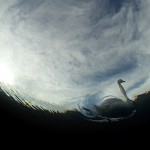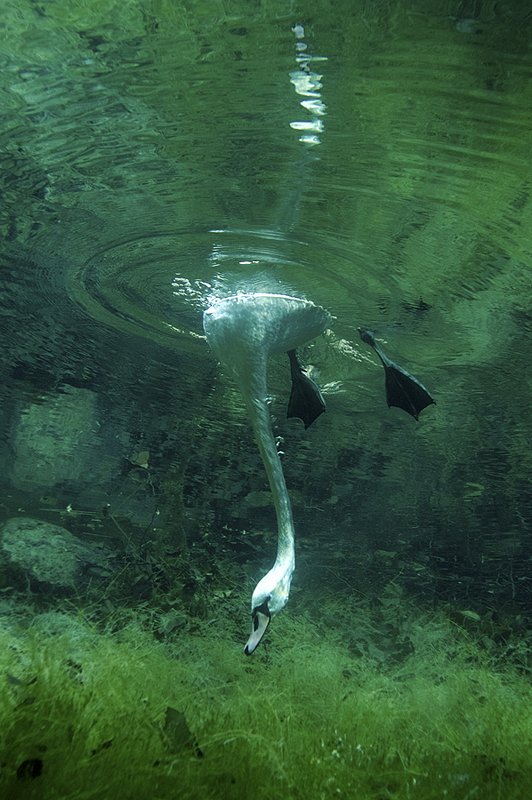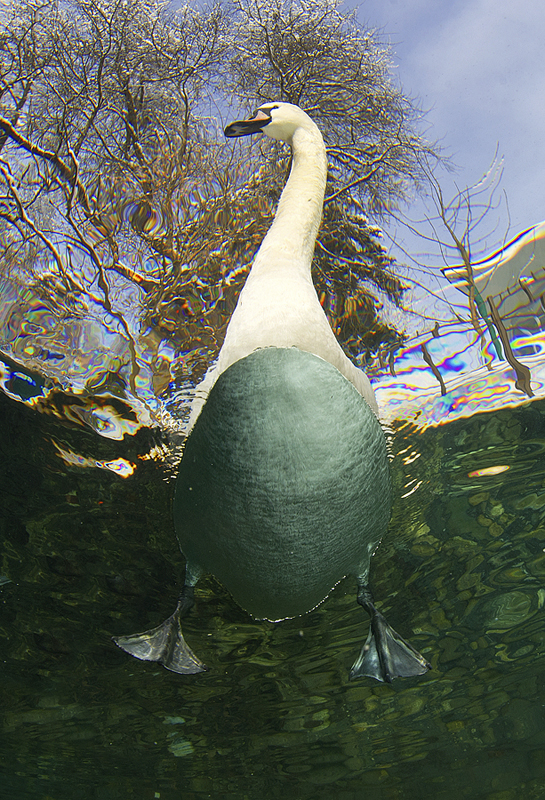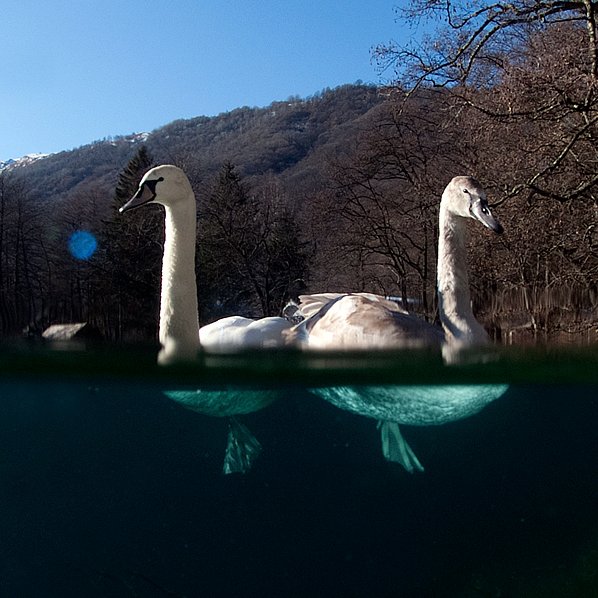 During our Blue Lake Awareness Project we did a lot of underwater swan photos.
During our Blue Lake Awareness Project we did a lot of underwater swan photos.
These swans used to migrate for the winter to Caspian sea, but few of them spend winter here, on the Blue lake, because it never freezes. It has the same temperature all year around +9C. There are a lot of algae – swans’ favorite food and they feel themselves safe in the water. That is why this is the best place for swans.
They cannot dive as ducks do, but they use their long necks to reach deep water weeds.
It was not easy to take these pictures. The Swans were very shy and they watched what is going under water. They were not afraid of a person on the surface but saw the photographer underwater and escaped each time. Victor had to change usual apparatus onto rebreather – this kind of underwater technique does not exhale bubbles – this let him an opportunity to come more close to the birds. And second thing should be changed – to approach birds horizontaly. Nobody know why, but if he came closer to Swans, emerging from the depth, then the Swans used to swim away from him and did not let him to come close enough. Even after that Victor had to spend about a week to let the birds got used to him.
For all peoples swans are the symbol of beauty and fidelity. There is a myth that the Earth was created from the swan’s egg. In nowadays swans became rare, they are killed for their feather and meat. We would like this noble bird not to disappear at all, and our children will know about it not only from the books and pictures.
There were 5 swans, one of them were killed by a poacher. He was not able to take the bird out from the cold water and left its body in the lake.
Swans, genus Cygnus, are birds of the family Anatidae, which also includes geese and ducks. These are the mute swans. Young birds, called cygnets, are not the bright white of mature adults, and their bill is dull greyish-black, not orange, for the first year. The down may range from pure white to grey to buff, with grey/buff the most common. All Mute Swans are white at maturity.

Usually swans have pure white or black or grey plumage but there are few species in the world which are mixed black and white. The sexes are alike in plumage. Compared to the closely related geese they have proportionally longer necks, allowing to search food deep in the water, and they are much larger in size – actually they are the largest water birds. Their wingspans can be almost 3 m, and weight over 15 kg. The feet are rather short, causing the swans as they move along the ground, make a few awkward impression. But they have a very well-developed muscles gliding wings, allowing them to travel thousands of kilometers during the annual migrations to the south and vice versa.



